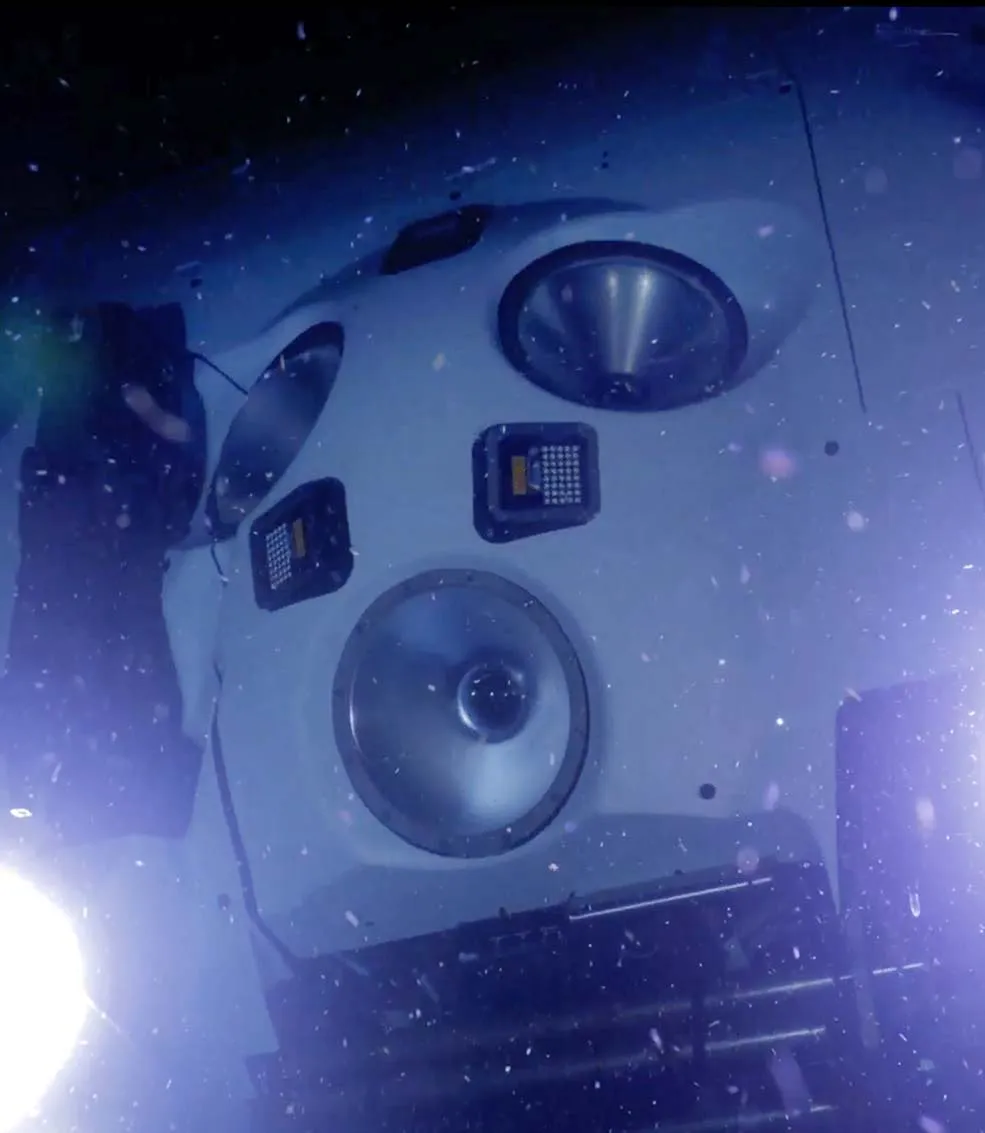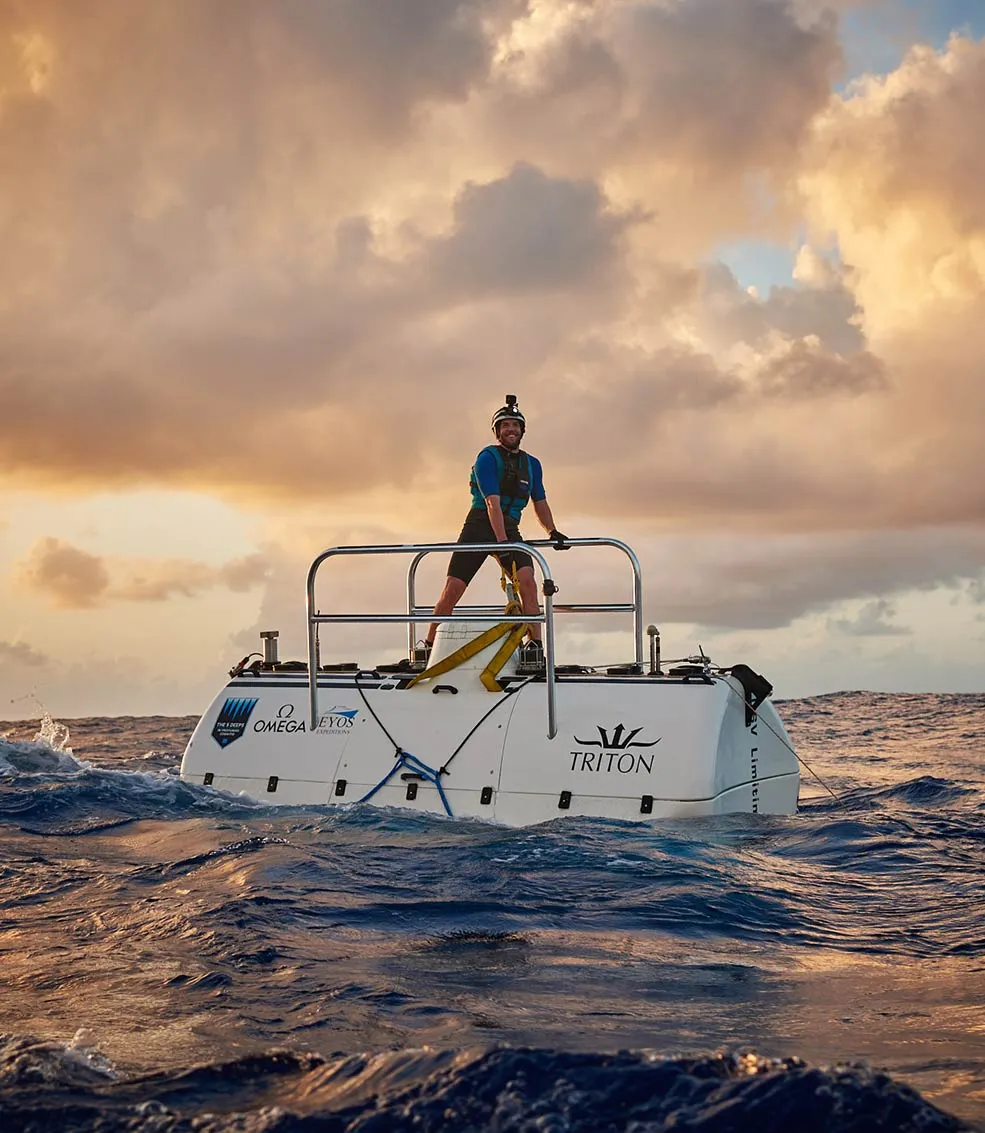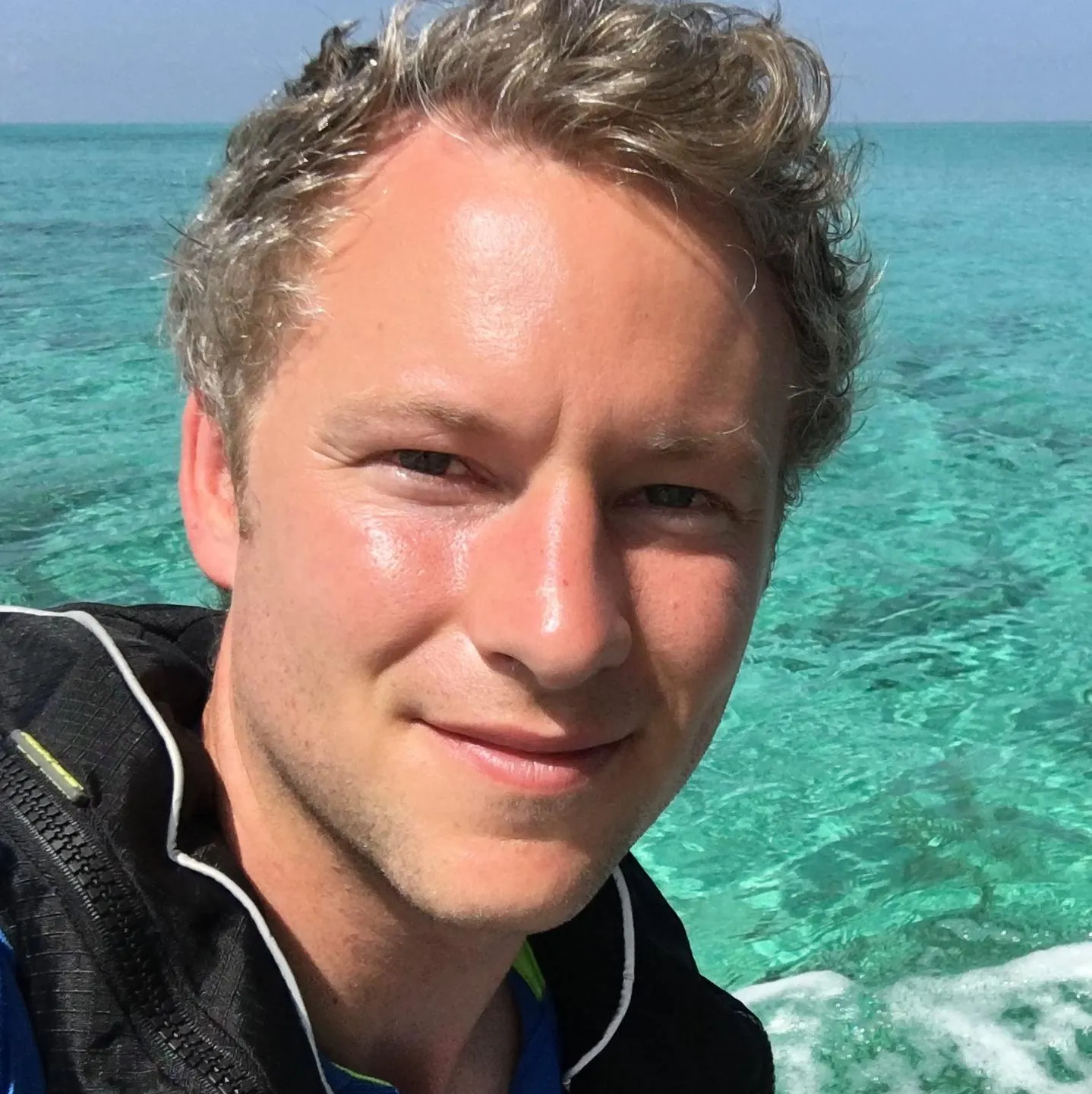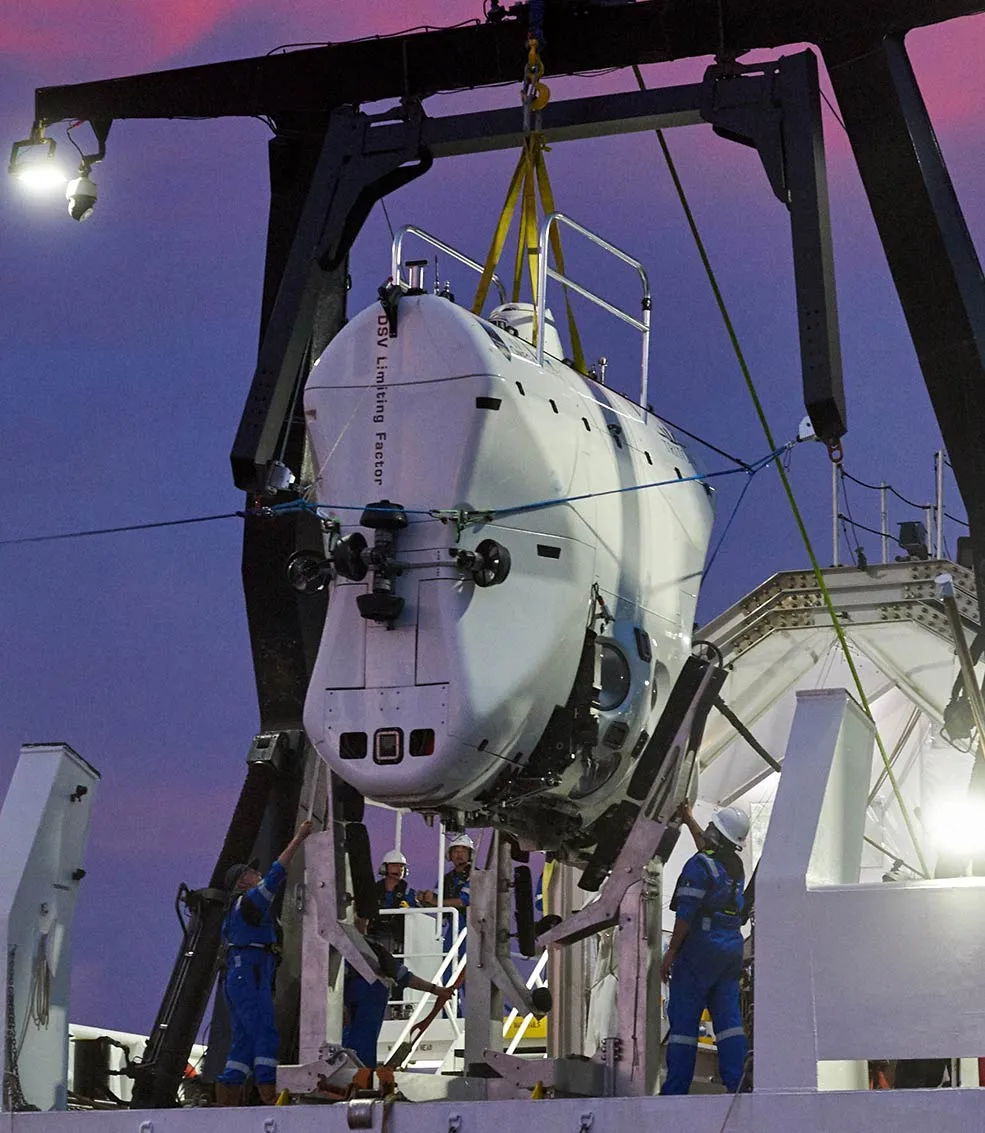Dive to the ultimate abyss
Limiting Factor is designed and commercially certified for extensive, repeated dives to full ocean depth, making it the only manned vessel that can visit any place in our oceans. For the special design and enhanced safety requirements engineers had to find solutions beyond rule standards.
The idea for Limiting Factor was born when extreme explorer Victor Vescovo, who had already reached the highest peaks of all continents as well as both poles, decided to explore the deepest trenches in each of the five oceans. Vescovo needed a deep-submergence vehicle capable of supporting this challenging mission, and started collaborating with the Florida-based manned submersible manufacturer Triton Submarines LLC. Triton agreed to design and build a manned submersible rated for full ocean depth (FOD), under the precondition that an independent critical design review including testing and certification by the IACS member DNV GL would be performed. “At Triton, we perceive collaboration with class as critical to our products being taken seriously by our clients, who are sophisticated, discerning and understandably cautious. Our clients recognize the importance of the accreditation process because they understand it is the only way they can be assured of safety,” Patrick Lahey, President of Triton Submarines, stresses.

Going the safe and economic way
“Very early in the design process I had to choose whether or not to make Limiting Factor an experimental or commercially certified submersible,” Victor Vescovo, underwater explorer, owner and chief pilot, remembers. “I realized it would take more time and money to have it commercially certified, but it was important to me for several reasons. It personally assures me of a high level of safety and redundancy during these extreme dives. I would be chief pilot during testing and on the expedition, and I very much wanted to come home! So that was one big reason – the high standard of safety associated with commercial classification. The certificate would also allow me to sell the Limiting Factor onward much more easily as it provides a ‘good seal of approval’ that would make diligence on the sub’s safety much smoother. Having commercial certification was also a premise to inviting scientists and other people to dives. Some institutions will not let their personnel into a sub on a dive unless it is certified. So I am able to get more people, and the best people, to enter the sub. All of these benefits were worth far more to me than the added expense of classification.”

Withstanding the enormous pressure in the depth
The heart of Limiting Factor is the titanium pressure hull, which is a weld-free construction designed to withstand the enormous pressure of 1,127 bar at full ocean depth. The special design of the unprecedented three FOD viewports provides the two passengers with a clear, wide-angled view into the ocean. The pressure hull has a frame which can absorb the shrinkage caused by the pressure. To compensate for the weight of the massive pressure hull, frame structure and equipment, a large volume of syntactic foam had to be added. It allows the craft to have a streamlined shape while providing enough buoyancy at full ocean depth.
The steel ballasting system ensures that the submersible is heavy enough to dive, and after release of the ballast light enough to return to the surface safely. Further jettisonable systems are integrated into the assembly to provide further buoyancy and to free the craft from any entanglement in the case of an emergency.
The design of Limiting Factor was developed and tested according to DNV GL’s Rules for Underwater Technology, which specify principal design and test requirements and were applied to various systems and components such as the pressure hull, frame, ballasting and buoyancy systems as well as electrical systems and pressure hull penetrators. “But for a special vehicle like this, aiming to set new records in diving, an engineering approach was required additionally to the design process and the test scope definition,” explains Jonathan Struwe, Senior Inspection Engineer and Surveyor for Pressure & Underwater Technology at DNV GL. “Existing standards were applied as far as possible, but in many cases additional, more detailed design analyses were carried out and the test scope was extended to cover any foreseeable load case during the lifetime of this deep-diving submersible.”

Comprehensive testing to maximize safety
Struwe was responsible for the classification of Limiting Factor and participated in the sea trials and record-setting dive. “The limited availability of systems and components on the market that are suitable for this extreme environment was a real challenge. Even if components were rated for full ocean depth, they had to undergo a comprehensive test programme in order to comply with the safety factor concept for the design and the test pressure as required by our rules. Basically, every single component exposed to the diving pressure was pressure-tested and qualified for application in the deep ocean.”
But pressure testing facilities capable of accommodating extensive pressure testing programmes are limited. Triton Submarines decided to build their own pressure test chambers, which are designed for a working pressure of 1,400 bar and are available for testing at any time. “The Five Deeps Expedition had to follow a very tight schedule accounting for the seasonal weather conditions at the dive sites in each of the five oceans. The challenge was to assemble, test and modify a complex manned submersible, integrated into a dedicated launch and recovery system on board of the deep submersible support vessel Pressure Drop within a few months,” Patrick Lahey points out. The collaboration between all stakeholders was driven by the goal of building a vehicle never built before, a fully certified manned submersible rated for full ocean depth. With this goal in mind the various suppliers and manufacturers ensured that the components and systems complied with the approved drawings and rule requirements and enabled surveyor access for testing and inspection. “This especially applies to Triton Submarines,” says Struwe. “Even when there were set-backs during testing and operation, the opportunity to learn from failure was welcomed to improve and create a system which not only fulfils but exceeds the rule requirements.”
The collaborative approach DNV GL took in the design and construction phase of the submersible was so refreshing. It wasn’t a case of the classification agency telling us what we weren’t allowed to do or had to do. Rather, they helped us figure out what we should and could do to make the best and safest full-ocean-depth submersible.

Setting new deep-diving records in the Mariana Trench
After most of the components and systems had arrived in July 2018, the complete submersible had to be assembled and tested within five weeks to avoid losing an entire year before the expeditions could begin. Limiting Factor was ready for sea trials near the Bahamas at the end of August 2018. After refitting some parts and making some modifications, the first dive to one of the five deeps was successfully completed in the Puerto Rico Trench, where the ballasting system for deeper depths was validated at 8,376 metres. The next dive took place in the Atlantic Ocean in December 2018, followed by the second deep in the Southern Ocean just north of Antarctica in February 2019, and a month later the Java Trench in the Indian Ocean. On 28 April 2019 Limiting Factor set a new record for the deepest manned descent, reaching 10,925 m ± 4 m in the Challenger Deep of the Mariana Trench, piloted solo by Victor Vescovo. Five days later, Patrick Lahey and Jonathan Struwe performed the deepest-ever marine sea trials, combined with a salvage operation to retrieve an unmanned scientific lander, an auxiliary vehicle that had accompanied the record dive and become stuck on the sea bottom. The Five Deeps Expedition also reached the Tonga Trench in the South Pacific, which is nearly as deep as the Mariana Trench, and the Molloy Deep in the Arctic Ocean, passing and visiting the wreck of RMS Titanic on the way. The entire programme was completed by August 2019.

Close collaboration was key to success
“The fact that a complex system like Limiting Factor can be designed, built, tested and certified in less than three years shows that it is possible to apply and meet formal rule requirements while at the same time defining an approach to specific problems where the rules cannot be applied. In this case our team from DNV GL acted as an enabler of a practical approach that was followed throughout the design, approval and testing process,” says Jonathan Struwe, summing up the great collaborative achievements of the challenging project.
Vescovo confirms: “The collaborative approach DNV GL took in the design and construction phase of the submersible was so refreshing. It wasn’t a case of the classification agency telling us what we weren’t allowed to do or had to do. Rather, they helped us figure out what we should and could do to make the best and safest full-ocean-depth submersible. It very much felt like a synergistic partnership between all stakeholders, and it helped us build a much better and safer vehicle than we could have if we had tried to do it alone.”
“Our goal was to build a submersible capable of repeated dives to any depth with its pedigree and safety assured by third-party accreditation,” Patrick Lahey adds. “Our dives in the Mariana Trench demonstrate we achieved our objective. The Triton 36,000/2 (“LF”) represents a quantum leap in the capabilities of a manned submersible and everyone at Triton is immensely proud to have had the privilege and opportunity to create such a remarkable craft, which was only possible by the unwavering support and vision of Victor Vescovo and the critical role DNV GL as third-party accreditation played in enhancing the safety, efficiency and effectiveness of our products.”
Contact us

- Key image: ©ReeveJolliffe
- Side image 2: ©Atlantic Productions
- Text image 1: ©ReeveJolliffe
- Side image 3: ©ReeveJolliffe
- Text image 2: ©Atlantic Productions
View image copyright information


